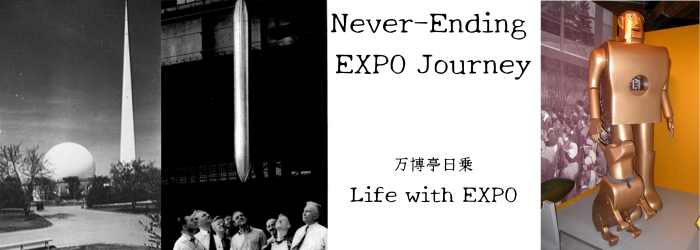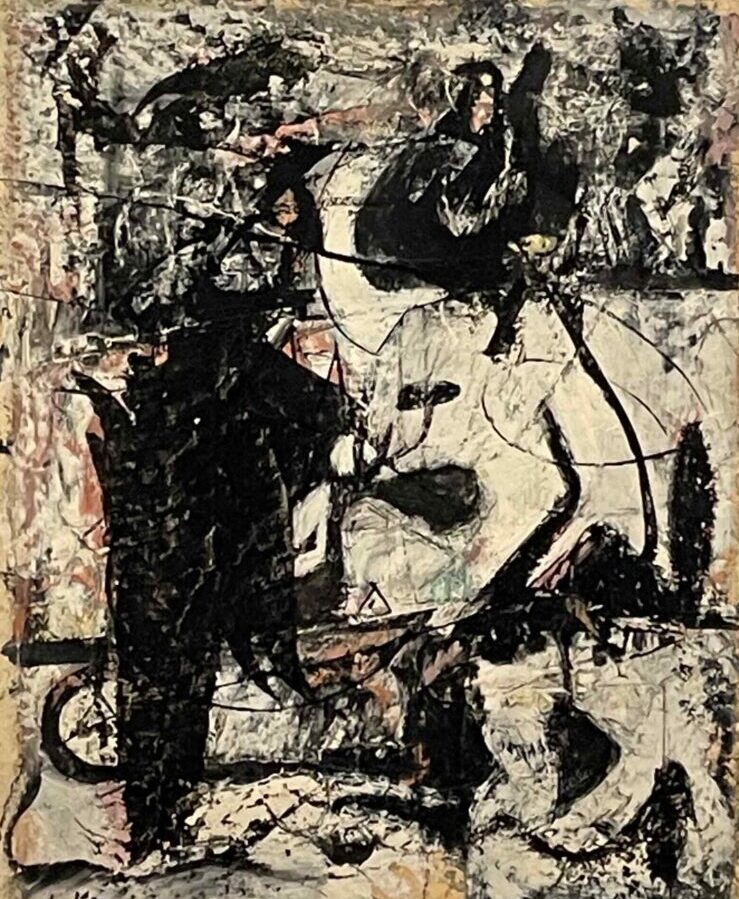Joan Miró and the World Expos
By the way, in the previous <32>, I introduced Section 3 of the exhibition “ABSTRACTION The Genesis and Evolution of Abstract Painting”, but if I continue to comment on each section like this, as there are 12 Sections, it seems like it will never end.
So, from now on, I would like to pick up what I am interested in at the exhibition related to World Expos.
“Section 6 Trans-Atlantic” contains several works by Joan Miró (1893-1983).
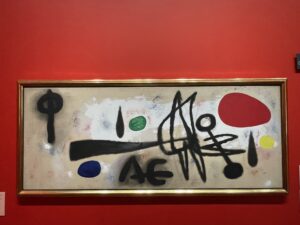
ミロ『絵画』
Miró “Painting”
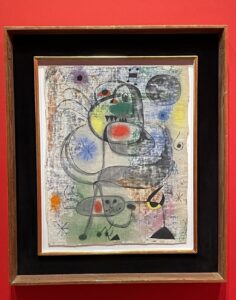
ミロ『夜の女と鳥』
Miró “Woman and Birds in the Night”
This Section 6 is subtitled “Pierre Matisse and His Surroundings”. Pierre Matisse (1900-1989) was the second son of Henri Matisse.
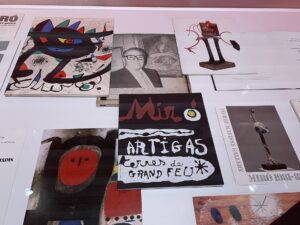
ピエール・マティス画廊関連資料(ミロ関連)
Materials on Pierre Matisse Gallery
He established a gallery in New York and introduced European avant-garde art to America.
Joan Miró was a painter to whom Pierre Matisse in particular put a lot of effort.
I touched on Joan Miró in <9> Miró’s Ceramic Mural “Innocent Laughter”.
At the 1937 Paris Universal Exposition, the Spanish Republic Pavilion exhibited Picasso’s “Guernica”, as well as Miró’s “The Harvester” and “Help Spain”.
He is also a painter deeply connected to the Expo, having visited Japan for the 1970 Osaka Expo and exhibiting his work at the Gas Pavilion.
The catalog commentary for the work “Three Sisters” (1938) on display this time says as follows;
*
… It seems that human anger and rebellion is the theme of this work, as “Harvester” (1937, whereabouts unknown) ,exhibited at the Spanish Pavilion of the Paris Exposition held the previous year (author’s note: 1937)
*
Abstract Expressionist Artists and the New York World’s Fair
In “Section 7 Abstract Expressionism“, works by Arshile Gorky (1904 – 1948), Willem De Kooning (1904 – 1997) andJackson Pollock (1912 – 1956) are also exhibited. These three artists all exhibited their works at the New York World’s Fair.
New York has hosted four World’s Fairs.
From July 14, 1853 to November 1, 1854, two years after the London Great Exhibition, the first World Exposition, the first New York World’s Fair was held in Manhattan’s Bryant Park (then known as “Reservoir Square”).
The second time was in 1901. It was held in Buffalo, far away from Manhattan. It was an Expo that commemorated the cheap electricity made possible by Niagara Falls Electricity Plant.
I introduced this Expo at <7>The news of Prime Minister Kishida’s attack makes me think of the World Expo.
In the 20th century, 2 World’s Fairs were held in 1939/40 and 1964/65. They were held in what is now a park called Flushing Meadows Corona Park, close to LaGuardia Airport.
The 1964/65 New York World’s Fair was not authorized by the BIE.
Abstract Expressionist painters were involved in the 1939/40 and 1964/65 World’s Fairs.
At the 1939/40 New York World’s Fair, artists such as Fernand Léger (whose works are exhibited in Sections 2 and 3 of this exhibition) also participated, but Arshile Gorky, Willem De Kooning and others who were young at the time, participated in murals
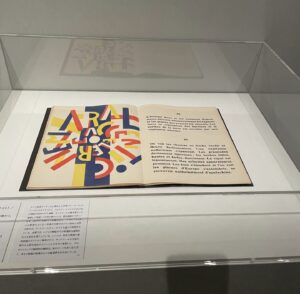
ブレーズ・サンドラール(テキスト)/レジェ(挿画)『ノートルダムの天使が撮った世界の終わり』
Blaise Cendrars (text)/Léger (Illustration) “La fin du monde filmée par l’ange de N.-D
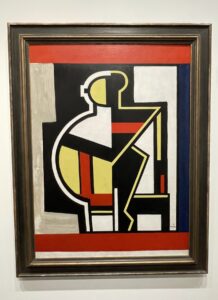
レジェ『抽象的コンポジション』
Léger “Abstract Composiiton”
Also at the 1964/65 New York World’s Fair, “Four Centuries of American Art” was held at the “Better Living Center.”
The exhibition featured 41 paintings and 5 sculptures, again including works by Willem De Kooning and Jackson Pollock.
After all, it seems that many of the artists we know cannot be un-related to World Expos.
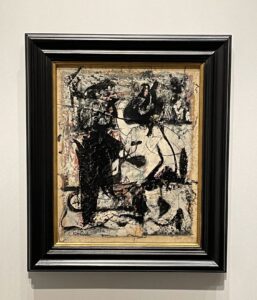
デ・クーニング『一月』
De Kooning “January”
In fact, this exhibition also includes works by Isamu Noguchi (1904-1988) and Alexander Calder (1898-1976).
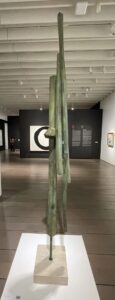
イサム・ノグチ『独り言』
Isamu Noguchi ” Soliloquy”
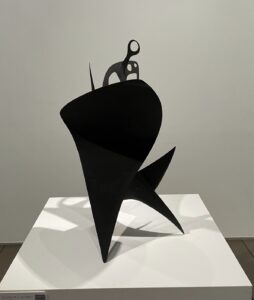
アレクサンダー・コールダー『単眼鏡』
Alexander Calder “Monocle”
It is said that Isamu Noguchi was approached by the ‘Committee on Sculpture’ of the 1964/65 New York World’s Fair to exhibit his work, but he never responded. So he did not participate.
With Noguchi’s total non-responsiveness, the committee next turned to Alexander Calder.
Alexander Calder is already associated with the 1937 Paris Universal Exposition, exhibiting his work in the Spanish Republic Pavilion, along with Picasso and Miró.
At the 1937 Paris Universal Exposition, Picasso’s “Guernica”, Miró’s “The Harvester”, and Calder’s “Mercury Fountain”were exhibited in the Spanish Republic Pavilion.
However, at the 1964/65 New York World’s Fair, Calder declined the invitation.
So neither Noguchi nor Calder was involved in the 1964/65 New York World’s Fair.
Joan Miró and Takiguchi Shuzo at the 1970 Osaka Expo
The next thing I noticed was, Section 10 Takiguchi Shuzo and the Jikken Kobo (Experimental Workshop).
Takiguchi Shuzo (1903-1979) is an art critic and an artist at the same time.
When I think of Takiguchi Shuzo, I think of his interaction with Joan Miró at the 1970 Osaka Expo (the works of Joan Miró are exhibited in Section 6 of this exhibition).
Miró and the 1970 Osaka Expo were introduced earlier in <9> Miró’s Ceramic Mural “Innocent Laughter”.
However, what was not mentioned in <9> was the interaction between Miró and Takiguchi Shuzo .
Takiguchi Shuzo was also the person who published “the world’s first” book about Miró.
The “Joan Miró and Japan” Exhibition was held from February 11th to April 17th, 2022, at the Bunkamura “The Museum” in Shibuya, Tokyo (then it traveled to the Aichi Prefectural Museum of Art and Toyama Prefectural Museum of Art).
In the Matsuda Kenji’s paper (pp. 24-31) in the catalog of the exhibition, he introduces the following testimony of the poet Ooka Makoto.
This was the first time Miró and Takiguchi Shuzo met, and it was on September 23, 1966, when Miró first came to Japan for the “Miró Exhibition” to be held in Japan.
*
I clearly remember the first meeting between Miró and Takiguchi Shûzô. That day I accompanied Miró from the morning onwards. I went with him because he wanted to go to the Asakusa Kaikan and several galleries in the Ginza. Mr. Takiguchi awaited us at the Minami Gallery, with two copies of the 1940 Atelier-sha book Miró in hand. Miró was accompanied by Aimé Maeght, the founder of the Maeght Gallery, and the poet Jacques Dupin who had done a major study on Miró. Takiguchi, in his usual very quiet voice, said two or three words to this painter as soon as he met him, and handed to Miro and the others his book on the artist written some 20 years prior. At that point Dupin exclaimed, ‘1940? That means this is the first book ever written about Miró!’. Takiguchi himself knew that it was the first. To the best of my knowledge, the first monograph on Miró published in the West was published in 1941.
Miró was moved and put his arm around Takiguchi Shüzö, not at all an overblown gesture. I clearly remember that moment when these two reticent poets embraced with few words spoken.
*
After that, Miró and Takiguchi Shuzo got to know each other closely, and left several collaborations of poetry and paintings, in which Miró added illustrations to Takiguchi Shuzo ‘s poems.
The exhibition at Bunkamura featured works by the two artists, such as “En companie des étoiles de Miró (In the Company of the Stars of Miró)”
In this exhibition, many paintings by Takiguchi Shuzo himself are on display.
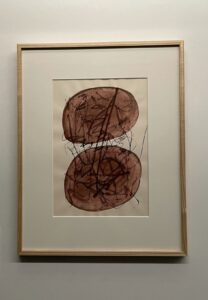
瀧口修造『無題』
Takiguchi Shuzo “Untitled”
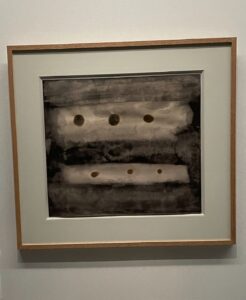
瀧口修造『無題』
Takiguchi Shuzo “Untitled”
It can be seen that Takiguchi Shuzo, as a painter, experimented with various styles. He must have been a multi-talented person, both in painting and in poetry.
Seen in this way, this “Abstraction” exhibition alone reminds me of the connection that various artists have with Expos over time.
